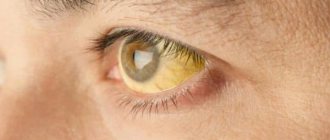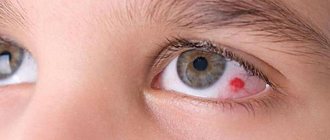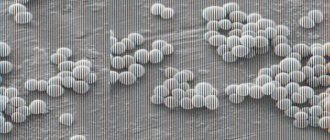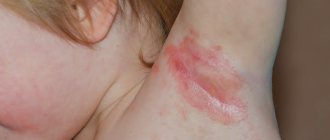Redness and pain in the eyes are common.
This symptomatology is experienced by people who work with gadgets for a long time, people who read, or people who work in poor lighting.
The pain can be acute, aching and dull. Localized on the front or back of the eyeball. At the same time, hyperemia appears. These signs appear in a variety of eye diseases. A common feature is impaired microcirculation, in which blood vessels burst.
Causes
Foreign body
Superficial ocular pain is often associated with a foreign object or chemical ingestion. In such cases, profuse lacrimation begins. This is a reflex mechanism necessary for washing out small particles that cannot be removed mechanically.
Redness from welding
The profession of a welder is a job with increased harmfulness. When welding parts, an electric arc occurs, which emits a powerful stream of ultraviolet rays that are dangerous to the eyes. They lead to the development of a physical burn of the eyes, which is determined by 4 degrees.
Electrophthalmia is manifested by the flickering of bunnies before the eyes, a film on the conjunctiva, swelling of the eyelids and nagging pain. At the same time, the acuity of visual perception decreases and hyperemia appears.
Computer syndrome
The more new gadgets come out, the more people turn to the ophthalmologist with eye strain. This effect is achieved by smartphones, computers, tablets and laptops.
A blue screen negatively affects the state of the visual analyzer.
Initially, fatigue and discomfort in the neck appear. Then comes headache and eye pain, sensitivity to light increases, and the eyes begin to become bloodshot when working for a long time. This indicates overstrain; the capillaries cannot withstand the increased visual load and burst.
The phenomenon is temporary and can be quickly eliminated if you organize your work and rest schedule correctly. Typically, no treatment is required.
Improper wearing of contact lenses
Incorrect use of contact optics leads to the development of conjunctivitis, dry eye syndrome and impaired visual perception. Failure to comply with hygiene rules, wearing lenses for longer than the period indicated on the package and improper mechanical cleaning lead to the development of dangerous infections.
Pain and redness are the main symptoms of any mishandling of contact lenses.
Reading in moving vehicles
When reading books in electronic or printed versions, muscles become tired in response to the changing curvature of the lens. The focal length to the text changes all the time as the car hits bumps or falls into potholes.
Environmental irritants
These factors include smoke, sun, wind, rain and snow. Atmospheric air also plays an important role. Disruption of redox processes in eye tissues may be caused by environmental factors.
As a result of the impact, the compensatory capabilities of the ecological system decrease.
Diseases
Conjunctival hyperemia and pain in the visual organs indicate serious illness. If, after eliminating unfavorable factors, the symptoms do not go away, you should think about a comprehensive examination.
Diseases that can lead to the appearance of these symptoms:
- increased intraocular pressure;
- conjunctivitis;
- injury;
- burn;
- infectious diseases;
- allergy;
- cold;
- diabetes.
Associated symptoms
Unpleasant sensations may indicate the presence of a foreign body in the eye.
If your eye is sick and red, it is difficult to independently determine the cause. These symptoms are common, so you should pay attention to the accompanying signs. First of all, it is necessary to prevent foreign bodies from entering the circuit, which could cause irritation. This phenomenon causes a feeling of being superfluous. If the manifestations signal the development of the disease, the following symptoms may occur:
- increased tearfulness;
- itching and peeling;
- feeling of stinging in the eyes;
- swelling of the eyelids;
- headache;
- presence of purulent discharge.
Studying a complete history makes it possible to determine the exact cause and begin treatment. It is important to pay attention to a person’s well-being. If the eyes become very red and the head hurts, then we are talking about a systemic infectious lesion and, most likely, an ophthalmological disease is only one of its manifestations. Such processes develop rapidly, so it is worth starting therapy in the early stages.
Treatment
If the cause is a foreign body, overwork, lack of sleep, improper use of lenses or computer syndrome, then you can solve the problem yourself. In such situations, no special treatment is required. The cause will need to be eliminated.
For example, remove the foreign body by washing, normalize your rest and work schedule, buy new lenses and properly care for them.
If symptoms persist for more than 2 days, medical attention will be required. Consult a doctor, find out what disease caused the hyperemia and pain, carry out treatment and follow the ophthalmologist’s instructions regarding hygiene, medication schedule and adherence to the regimen.
Drops
Eye drops are prescribed for eye diseases. The medications are prescribed by an ophthalmologist; independent purchase and use is prohibited. Many medications temporarily improve the condition, while some lead to conjunctivitis and cataracts. Therefore, the dosage schedule and dosage should be prescribed by an ophthalmologist.
Table. Types of drops, list of drugs and their effects
| Kinds | Titles | Description |
| Moisturizing | Oksial | Moisturizes with electrolytes and hyaluronic acid. Provides long-lasting relief from discomfort, dryness and irritation. Not used in pediatrics. |
| Natural tear | Contains a water-soluble polymer system. The effect of the drug lasts for 90 minutes. Drops are used for dry eye syndrome and to relieve corneal syndrome. | |
| Artificial tear | Hypromellose restores and stabilizes the optical characteristics of the tear film. Contains boric acid, cannot be used when wearing CL, remove before instillation. | |
| Antibacterial | Tobrex | Used for keratitis, conjunctivitis, blepharitis. Not prescribed for hypersensitivity to the components of the drug. |
| Maxitrol | Combination medicine. Has anti-inflammatory and antibacterial effects. Use is contraindicated for tuberculosis, fungal infections, smallpox, purulent blepharitis. | |
| Antiviral | Okoferon | Used to treat and prevent herpes infections. Contraindicated in multiple sclerosis and diabetes. |
| Tobradex | It is made in the form of drops and ointments. You cannot use both types at the same time, otherwise an overdose of the active ingredient will occur. Once opened, use within 4 weeks. | |
| Oftan I'm coming | The solution does not penetrate the cornea well. Contraindicated in deep forms of keratitis and iritis. Interaction with glucocorticosteroids increases the risk of systemic side effects. | |
| Anti-inflammatory | Indocollier | Has an analgesic effect. Inhibits the synthesis of prostaglandins, relieves inflammation and pain. |
| Garazon | Combination medicine. Indicated for inflammatory pathologies associated with bacterial infection. It is not permissible to use it in the treatment of pregnant women or during latation. | |
| Antiallergic | Lecrolin | Stabilizes the membranes of mast cells that have been exposed to antigens. With long-term use, it is necessary to monitor the effect of therapy. |
| Opatanol | The medicine is anti-edematous and anti-allergic. If you adhere to the treatment regimen, an overdose will not occur. | |
| Reducing intraocular pressure | Azopt | The drug reduces the secretion of intraocular fluid, slows down the formation of bicarbonate with a further reduction in sodium transport. |
| Timolol | A non-selective beta blocker reduces normal and elevated IOP. Safety of use during pregnancy and lactation. | |
| Pilocarpine | Has an antiglaucoma effect. Can be used during pregnancy, for children and nursing mothers as prescribed by a doctor. |
Medical therapy
Any treatment for red eyes accompanied by pain is carried out under the supervision of an ophthalmologist. If discomfort does not go away for 2 days, do not use medications or home remedies.
The doctor will find out the cause of the disease, conduct an examination and prescribe professional treatment. Medical therapy consists of:
- eye drops;
- immunostimulating drugs;
- compliance with hygiene rules.
Self-treatment does not always bring the desired results. You should not risk your health and the health of your loved ones and children.
Traditional methods of treatment
Congestion and pain can be managed with home remedies. Before use, consult a doctor.
Traditional recipes recommended by doctors:
- Kalanchoe. Grind the leaves to a pulp along with the peel. Wrap the mixture in a gauze bandage so that it allows the juice to pass through. Apply to eyes for 10 minutes. If there is inflammation or infection, Kalanchoe will cope with them in several procedures.
- Drop aloe juice into your eyes. 2-3 drops into each organ. Use for lotions and compresses.
- Parsley juice removes redness. Cotton swabs are moistened in the product and applied to the eyes for 15 minutes.
Homeopathic remedies for red eyes
Widely used drugs in this category include:
| Name | Mechanism of action |
| Okulochel | Anti-inflammatory, antimicrobial and analgesic. |
| Allium flail* | Relief of allergic manifestations. |
| Ambrosia | Sedative and decongestant. |
| Apis mellifica** | Anti-inflammatory, anti-allergenic and stimulating regeneration. |
| Alumina 6C | Relieves eyelid dryness and burning sensation. |
| Apis 30 | Analgesic, relieving burning sensation and photophobia. |
| Argentum nitricum 30 | Antibacterial. |
| Mercurius sol. thirty | Antiviral and antibacterial. |
| Pulsatilla 30 | Antibacterial, anti-inflammatory, relieves burning sensation and itching. |
* Made from onion extract.
** Based on bee venom.
Prevention
Prevention measures depend on the cause of the redness and soreness. These include:
- Eye protection when working with welding and when going outside on a sunny day. Wear safety glasses and sunglasses.
- Rest every 45–60 minutes when working at the computer for long periods of time. Do exercises to relax the extraocular muscles.
- Strengthen blood vessels so that the eyes do not turn red. An excellent way is to do eye exercises and take certain medications to restore the permeability of the walls.
- Give up bad habits and alcohol abuse if your eyes begin to turn red due to any illness or strain.
- Carefully observe hygiene rules to prevent the development of infectious diseases.
- Take care of your contact lenses. Clean promptly and replace with a new pair if damaged.
- Eat fortified foods. They strengthen the immune system and improve the body's vascular system.
The main thing is to undergo preventive examinations and treat pathological conditions in a timely manner. In any doubtful situation, you need to seek help and not self-medicate. Redness and pain can be dangerous for the health of the visual system, as they are signs of dangerous diseases.
Gymnastics for the eyes
Aimed at strengthening the eye muscles and activating blood circulation:
- Hold the pencil in your outstretched hand, moving it up-down-left-right 10-15 times. The head is motionless. Follow the tip of the pencil.
- Standing against the wall, look from the upper left corner of the room to the lower right 50 times.
- Turn your body left and right 20-30 times. The gaze accompanies the movements.
- Look at the diffused bright light for 2-3 seconds, then cover your eyes with your palms. Repeat 15 times.
- Open your eyes wide 40 times, squint with effort, close again.
- Alternately move your gaze from a distant object to your watch 15 times.
- Close your eyes tightly for 4-5 seconds 8 times, then open them.
- Perform 3-4 series of rapid blinks lasting 15 seconds.
- Gently massage your eyelids with circular movements of your fingers with your eyes closed for 1 minute.
- Make circular movements with your eyeballs 4-6 times, clockwise and counterclockwise.
Barley
In everyday life, barley is an acute purulent inflammation of the eyelash bulb and the sebaceous gland around the hair follicle. The disease is caused by staphylococcus, and people with reduced immunity often suffer from styes.
First, pain is felt when pressing, and then redness and swelling of the eyelid occurs. The swelling increases, which sometimes causes the palpebral fissure to decrease. After a few days, an abscess with a yellow head forms on the eyelid. Inflammation may be accompanied by signs of malaise: fever, swollen lymph nodes, headache.
Pain in the lower eyelid occurs due to stye
Sometimes several affected areas form on the eyelid, which merge with each other. An abscess may appear on the inside of the eyelid, this indicates inflammation of the sebaceous glands at the edges of the eyelid, this disease is called meibomitis. With this form of stye, the symptoms of the disease are less acute, and pus breaks into the conjunctival sac.
Why does the lower eyelid hurt?
If you have stye, you should not apply heat or apply compresses to the sore eye. It is necessary to use antibacterial eye ointments Hydrocortisone, Floxal, as well as Levomycetin and Tsipromed drops. If the abscess does not mature for a long time, UHF therapy helps; it is carried out in the absence of elevated temperature.
Often the cause of inflammation is clogging of the meibomian glands. In general, their task is to provide oily lubrication to the eyelids. For these purposes, sebum is produced in the glands. Unfortunately, sometimes the amount of this lubricant is slightly more than necessary (the reasons usually lie in metabolism).
The process flow looks like this:
- instead of leaving the mucous membrane of the eye, the lubricant accumulates;
- a clump of organic material forms;
- a little more time, and now the bacteria began to actively multiply, turning the situation towards the growth of a purulent source;
- Gradually swelling, the abscess causes more and more obvious pain when pressing on the eyelid from above, and sometimes with normal blinking.
Internal stye.
Initial stage The process is often accelerated due to a weakened immune system or a cold.
An inflamed tubercle, as it were, takes on the cold risk factor and is a signal that inflammation is present in the body. As a rule, it is enough to quickly respond with conservative treatment, and after a couple of days (sometimes 3-4) there is no trace of the stye. Also during this period, prevention of influenza and sore throat is recommended. Drink more warm liquids, increase the content of ascorbic acid in your food.
Conjunctivitis
Conjunctivitis is an inflammatory process of the mucous membrane of the eyes. A thin transparent film (conjunctiva) covers the outside of the eye and the back surface of the eyelids.
This film secretes tear fluid and protects in case of dust and debris getting on the mucous membrane.
When the conjunctiva becomes inflamed, the organ becomes vulnerable, which can lead to poor vision and pain. If you have such symptoms, you should go to the clinic for advice.
With conjunctivitis, the membranes of the eyes are irritated
This disease can be caused by infectious diseases. Bacteria, various harmful microorganisms and viruses are usually brought in by dirty hands. Poor quality cosmetics can also cause redness.
In hot weather, there is a risk of infection by drinking suspicious water or swimming in a dirty pond.
Sometimes a viral infection leads to conjunctivitis, when the virus enters the blood and has a negative effect on the entire body.
Conjunctivitis may be the body's reaction to unfavorable factors. Eyes become red from tobacco smoke, bright sunlight, due to hypothermia or overwork. Sometimes allergies caused by pollen, wool and dust can be disguised as conjunctivitis. To cure a disease, allergens must be removed.
Based on the cause of inflammation, conjunctivitis is divided into types:
- bacterial;
- viral;
- allergic.
The first two pose a great danger, as they are transmitted by airborne droplets. The bacterial infection affects both eyes, which will fester and secrete mucus. With a viral disease, only one person hurts. For more information about conjunctivitis, watch this video:
If you spend a long time in tobacco smoke or places where there are chemical impurities in the air, chronic conjunctivitis develops.
It can also be caused by vitamin deficiency or metabolic disorders.
Signs of acute conjunctivitis are an inflamed red eye due to ruptured capillaries. Drops and compresses will help relieve symptoms.









